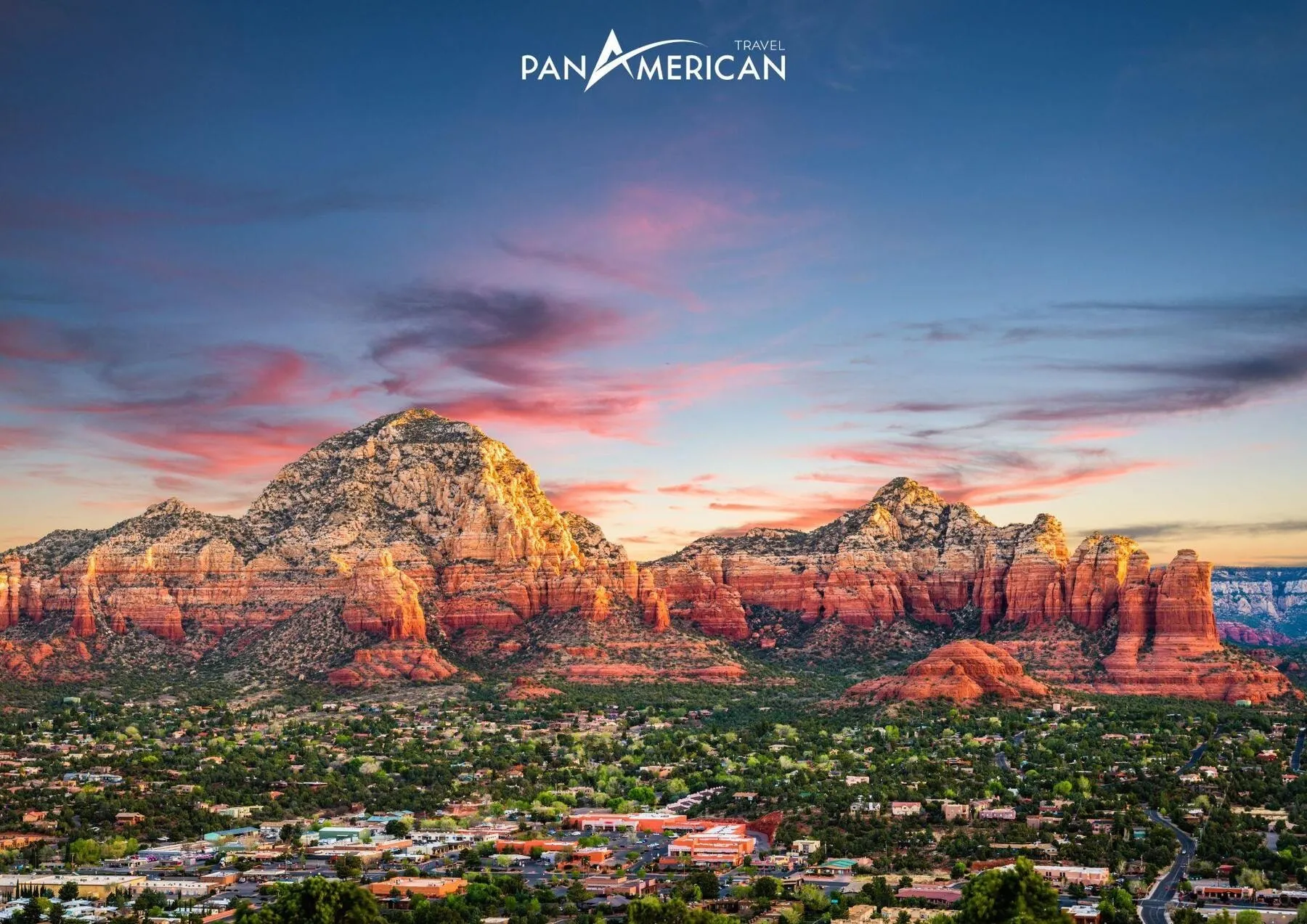Arizona, renowned for its spectacular natural wonders like the Grand Canyon, Antelope Canyon, and Horseshoe Bend, is not only an ideal destination for summer travel but also a thrilling challenge for winter hiking enthusiasts. However, winter hiking in Arizona requires thorough preparation and experience to ensure safety and a memorable journey.
Why Hike in Arizona During Winter?
While winter in Arizona can be harsh, it also offers unique experiences you won’t find in other seasons:
- Majestic scenery: Snow-capped red rock mountains create a stunning contrasting landscape, highlighting Arizona’s raw and magnificent beauty.
- Cool weather: Compared to the intense summer heat, winter brings cooler, more pleasant weather for hiking, especially during the day.
- Fewer tourists: Winter is not peak tourist season in Arizona, so you’ll have the opportunity to enjoy quieter and more private trails.
- Personal challenge: Winter hiking requires more thorough preparation and better skills, providing a chance to challenge and enhance your abilities.
Thorough Preparation for Your Winter Hiking Trip
To have a safe and successful winter hiking trip in Arizona, you need to prepare everything carefully, from equipment to knowledge and skills.
1. Hiking Gear
- Warm clothing:
- Thermal base layers (preferably merino wool or synthetic materials).
- Down jacket or insulated jacket.
- Windproof and waterproof outer shell jacket.
- Thermal base layer pants.
- Windproof and waterproof hiking pants.
- Specialized hiking boots: Choose boots with good traction, waterproof features, and ankle support.
- Warm socks: Wear multiple layers of socks, preferably merino wool or synthetic materials.
- Gloves:
- Thermal gloves.
- Waterproof gloves.
- Wool hat or Buff: Keep your head and neck warm.
- Sunglasses or snow goggles: Protect your eyes from sunlight and glare from snow.
- Sunscreen: Even in winter, the Arizona sun can be strong.
- Hiking backpack: Choose a backpack of appropriate size for your trip, with waterproof features and multiple compartments for storage.
- Hiking poles: Help reduce pressure on your knees and increase stability on difficult terrain.
- Flashlight or headlamp: Necessary for navigating in darkness or low light conditions.
- Compass or GPS: Help you navigate and avoid getting lost.
- Hiking area map: Study the map carefully before you go and bring a paper map as a backup.
- First-aid kit: Include essential items for treating minor injuries, colds, allergies, and other health issues.
- Water and snacks: Bring enough water and energy-rich snacks to maintain your energy throughout the trip.
2. Skills and Experience
- Basic hiking skills: You need basic hiking skills, including how to use hiking poles, how to move on steep terrain, and how to maintain balance.
- Experience hiking in harsh weather conditions: If you don’t have winter hiking experience, start with shorter and easier trails before tackling more challenging ones.
- Survival skills: You should equip yourself with basic survival skills, such as how to set up a tent, how to start a fire, and how to find water sources.
- Weather knowledge: Monitor the weather forecast before you go and be prepared for unexpected changes.
3. Choosing the Right Hiking Trail
Arizona has many different hiking trails, from easy trails for beginners to challenging trails for experienced hikers. Here are a few suggestions:
- Bright Angel Trail (Grand Canyon): One of the most popular hiking trails in the Grand Canyon, with a moderate incline and stunning scenery. However, be aware that this trail can become very slippery in winter due to ice and snow.
- Humphreys Peak Trail (Flagstaff): The trail leading to the summit of Humphreys Peak, the highest mountain in Arizona. This is a challenging trail that requires good physical condition and hiking experience.
- Echo Canyon Trail (Camelback Mountain, Phoenix): A short but steep trail with many sections requiring scrambling. This trail offers stunning views of Phoenix city.
4. Safety Precautions
- Hike in a group: Avoid hiking alone, especially in winter. Hike with a group or inform family and friends about your plans.
- Follow park regulations: Learn and adhere to the regulations of the national park or area where you plan to hike.
- Pay attention to your health: If you feel tired or have any unusual health symptoms, stop and rest.
- Bring a mobile phone: Make sure your phone is fully charged and bring a portable charger. However, be aware that not all areas in Arizona have cell service.
- Know how to handle emergencies: Learn about first aid measures and how to contact rescue services in case of emergency.

5. Check the Weather
Weather in Arizona during winter can change very quickly. Therefore, checking the weather forecast before starting your journey is extremely important. Monitor reliable weather sources and prepare for harsh weather conditions such as snowfall, strong winds, or low temperatures.
6. Plan in Detail
A detailed plan will help you be more proactive on your trip and minimize risks. Your plan should include:
- Specific itinerary: Clearly define the start and end times of your trip, as well as the estimated time for each section of the trail.
- Rest stops and breaks: List the locations where you will stop to rest, eat, and enjoy the scenery.
- Contingency plans: Prepare backup plans in case of bad weather, encountering problems, or being unable to complete the trail as planned.
The Most Beautiful Winter Hiking Locations in Arizona
Besides the trails mentioned above, Arizona has many other hiking locations suitable for winter. Here are a few suggestions:
- Superstition Mountains: Mysterious mountains with red rock peaks and deep canyons.
- Pusch Ridge Wilderness: A wilderness area with diverse hiking trails, from easy to difficult.
- Mount Lemmon: The highest mountain in the Santa Catalina Mountains, with cool climate and stunning scenery.

Notes on Permits and Entrance Fees
Before hiking in Arizona, research the regulations regarding permits and entrance fees. Some national parks and conservation areas may require you to purchase tickets or register in advance before entering.
Respect Nature
When hiking, always remember to maintain environmental hygiene, do not litter, and minimize your impact on the natural ecosystem. Pack out all your trash and follow the environmental protection rules of the area you are visiting.
Conclusion
Winter hiking in Arizona is a fantastic experience, but it requires thorough preparation and a high sense of safety awareness. Hopefully, these tips will help you have a memorable trip and successfully conquer the beautiful peaks of Arizona. Remember that careful preparation and a sense of responsibility are key to fully enjoying the raw and magnificent beauty of this land.